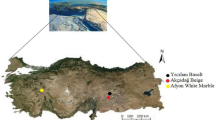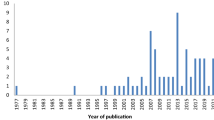Abstract
This study aims to determine mechanical and thermal properties of Saint-Maximin limestone, similar to the Lutetian stone found in the vaults of the Notre-Dame de Paris cathedral, and their variations after heating–cooling cycles at temperatures up to 800 °C. An extensive experimental campaign, including both destructive and non-destructive testing, was carried out. The results indicate that the samples can be considered to be isotropic, and the effect of temperature on Poisson's ratio, static modulus of elasticity, compressive and tensile strengths were measured. Non-destructive testing revealed that the usual correlation equations between ultrasonic measurements and mechanical properties are not valid for heated stone samples, particularly when estimating Poisson's ratio. An alternative measurement method using impulse modal analysis was proposed to overcome this issue. Uniaxial compressive tests on specimens of different geometries were used for the estimation of shape factors specific to Saint-Maximin stone. Some of these shape factors contradict the current European standard for stone, which seems to overestimate the effect of slenderness. The study also suggests shape factors after heating at 300 °C and 600 °C to account for the effect of heating on the compressive strength. The results demonstrate that, while the correlations established for stones at room temperature remain valid, they are not necessarily accurate after a heating–cooling cycle. This study provides important information for the numerical modelling of this material from mechanical and thermal perspectives.










Similar content being viewed by others
References
Deldicque DS, Rouzaud J-N (2020) Températures atteintes par la charpente de Notre-Dame de Paris lors de l’incendie du 15 avril 2019 déterminées par la paléothermométrie Raman. C R Géosci 352:7–18. https://doi.org/10.5802/crgeos.9
Praticò Y, Ochsendorf J, Holzer S, Flatt RJ (2020) Post-fire restoration of historic buildings and implications for Notre-Dame de Paris. Nat Mater 19:817–820. https://doi.org/10.1038/s41563-020-0748-y
Sciarretta F, Eslami J, Beaucour A-L, Noumowé A (2021) State-of-the-art of construction stones for masonry exposed to high temperatures. Constr Build Mater 304:124536. https://doi.org/10.1016/j.conbuildmat.2021.124536
Parent T, Domede N, Sellier A, Mouatt L (2015) Mechanical characterization of limestone from sound velocity measurement. Int J Rock Mech Min Sci 79:149–156. https://doi.org/10.1016/j.ijrmms.2015.08.009
Brotons V, Tomás R, Ivorra S et al (2016) Improved correlation between the static and dynamic elastic modulus of different types of rocks. Mater Struct 49:3021–3037. https://doi.org/10.1617/s11527-015-0702-7
Vigroux M, Eslami J, Beaucour A-L et al (2021) High temperature behaviour of various natural building stones. Constr Build Mater 272:121629. https://doi.org/10.1016/j.conbuildmat.2020.121629
Vigroux M, Sciarretta F, Eslami J et al (2022) High temperature effects on the properties of limestones: post-fire diagnostics and material’s durability. Mater Struct 55:253. https://doi.org/10.1617/s11527-022-02086-5
Hawkins AB (1998) Aspects of rock strength. Bull Eng Geol Environ 57:17–30. https://doi.org/10.1007/s100640050017
Dabat T, Mertz J-D, Leroux L, Melinge Y (2021) Cathédrale Notre-Dame de Paris : Voûtes effondrées, murs bahuts et pignons, Caractérisation des carottes de pierre prélevées après l’incendie du 15 avril 2019. Laboratoire de recherche des monuments historiques, Champs-sur-Marne, France
AFNOR (1999) EN ISO 834-1–Fire-resistance tests—elements of building construction—part 1: general requirements. AFNOR, La Plaine Saint-Denis France
Binda L, Saisi A, Tiraboschi C (2001) Application of sonic tests to the diagnosis of damaged and repaired structures. NDT E Int 34:123–138. https://doi.org/10.1016/S0963-8695(00)00037-2
Domede N, Parent T, Guenser C et al (2024) Mechanical characterization of the stones of Notre-Dame de Paris by in situ sonic auscultation. Int J Rock Mech Min Sci 175:105671. https://doi.org/10.1016/j.ijrmms.2024.105671
AFNOR (2004) Natural stone test methods—determination of sound speed propagation. AFNOR, La Plaine Saint-Denis France
Cuxac P (1991) Propagation et atténuation des ondes ultrasoniques dans des roches fissurées et anisotropes. Institut National Polytechnique de Lorraine, Nancy
PROCEQ (2013) PUNDIT PL-200 operating instructions. PROCEQ, Schwerzenbach
Guyader J, Denis A (1986) Propagation des ondes dans les roches anisotropes sous contrainte. Évaluation de la qualité des schistes ardoisiers. Bull Int Assoc Eng Geol 33:49–55. https://doi.org/10.1007/BF02594705
Fort R, Varas MJ, Alvarez de Buergo M, Martin-Freire D (2011) Determination of anisotropy to enhance the durability of natural stone. J Geophys Eng 8:S132–S144. https://doi.org/10.1088/1742-2132/8/3/S13
Christaras B, Auger F, Mosse E (1994) Determination of the moduli of elasticity of rocks. Comparison of the ultrasonic velocity and mechanical resonance frequency methods with direct static methods. Mater Struct 27:222–228. https://doi.org/10.1007/BF02473036
Saad A, Bost M (2009) The resonant frequency measurement and cracking evolution in rocks. ISRM, Dubrovnik-Cavtat
Fogue-Djombou YI, Corn S, Clerc L et al (2019) Freeze-thaw resistance of limestone roofing tiles assessed through impulse vibration monitoring and finite element modeling in relation to their microstructure. Constr Build Mater 205:656–667. https://doi.org/10.1016/j.conbuildmat.2019.01.211
AFNOR (2007) Natural stone test methods—determination of flexural strength under concentrated load. AFNOR, La Plaine Saint-Denis France
AFNOR (2015) Methods of test for masonry units—part 1: determination of compressive strength. AFNOR, La Plaine Saint-Denis France
Gustafsson SE (1991) Transient plane source techniques for thermal conductivity and thermal diffusivity measurements of solid materials. Rev Sci Instrum 62:797–804. https://doi.org/10.1063/1.1142087
Chi W, Sampath S, Wang H (2006) Ambient and high-temperature thermal conductivity of thermal sprayed coatings. J Therm Spray Technol 15:773–778. https://doi.org/10.1361/105996306X146730
Yoshinaka R, Osada M, Park H et al (2008) Practical determination of mechanical design parameters of intact rock considering scale effect. Eng Geol 96:173–186. https://doi.org/10.1016/j.enggeo.2007.10.008
Tuncay E, Hasancebi N (2009) The effect of length to diameter ratio of test specimens on the uniaxial compressive strength of rock. Bull Eng Geol Environ 68:491–497. https://doi.org/10.1007/s10064-009-0227-9
Acknowledgements
The authors express their gratitude to the French National Research Agency (ANR) for supporting their investigations, and to Rocamat for providing the stone samples. The authors thank Susan Becker for her help in proofreading.
Funding
Agence Nationale de la Recherche (ANR-20-CE22-0004).
Author information
Authors and Affiliations
Contributions
All authors contributed to the conception and design of the study. Resources and equipment were provided by S. Corn and M. Salgues. Material preparation, data collection, analysis and writing of the first draft were carried out by C. Guenser. The manuscript was discussed and revised by all authors. All authors read and approved the final version of the manuscript. The study was supervised by N. Domede.
Corresponding author
Ethics declarations
Conflict of interest
The investigations and results reported here were supported by the French National Research Agency (ANR) under the grant ANR-20-CE22-0004 (DEMMEFI research program). The authors have no competing interests to declare that are relevant to the content of this article.
Additional information
Publisher's Note
Springer Nature remains neutral with regard to jurisdictional claims in published maps and institutional affiliations.
Rights and permissions
Springer Nature or its licensor (e.g. a society or other partner) holds exclusive rights to this article under a publishing agreement with the author(s) or other rightsholder(s); author self-archiving of the accepted manuscript version of this article is solely governed by the terms of such publishing agreement and applicable law.
About this article
Cite this article
Guenser, C., Corn, S., Salgues, M. et al. Effect of high temperatures on the mechanical and thermal properties of Notre-Dame de Paris Lutetian limestone. Mater Struct 57, 81 (2024). https://doi.org/10.1617/s11527-024-02354-6
Received:
Accepted:
Published:
DOI: https://doi.org/10.1617/s11527-024-02354-6




